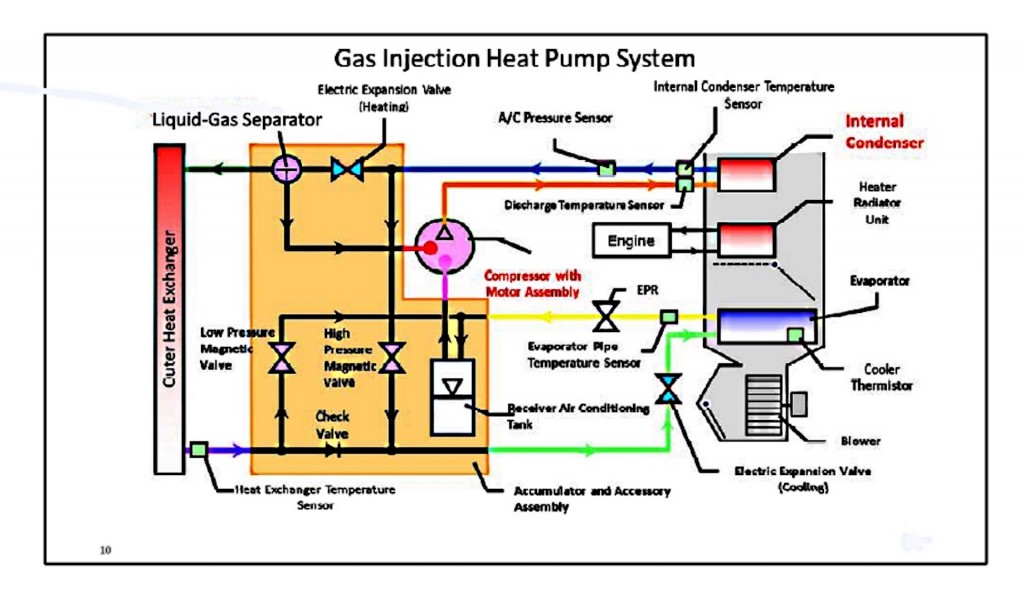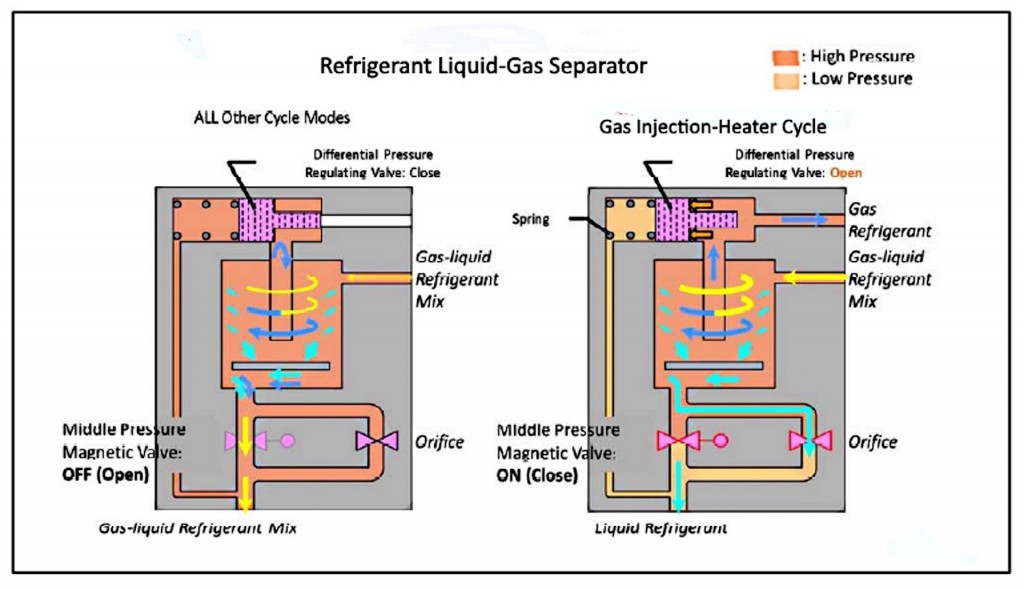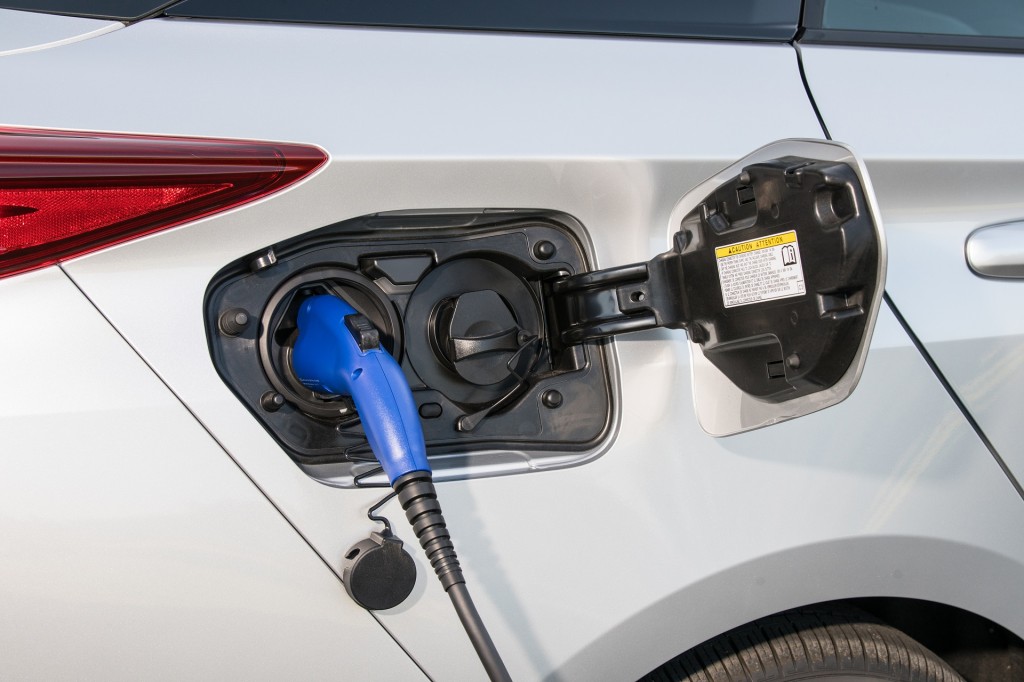The challenge of reducing the energy used by traditional heating systems in battery-electric and plug-in hybrid cars is one automakers still grapple with today.
Reduced battery range in cold temperatures, combined with batteries working overtime to heat the cabin, can produce drastic declines in EPA-estimated range figures.
The Toyota Prius Prime plug-in hybrid, however, uses an advanced heat-pump design to minimize the loss of range.
DON'T MISS: 2017 Toyota Prius Prime: first drive of new plug-in hybrid
Toyota and Denso engineered the heat pump to include components from stationary commercial units, according to an in-depth look from SAE.
A liquid refrigerant that turns into a gas and then back into liquid, and a gas-injection circuit, help provide heat in temperatures as low as 14 degrees Fahrenheit.
How does it work? The basic principle is that gases cool down when they expand, and warm up when they're compressed.

Toyota Prius Prime heat pump
In heating mode, the refrigerant gas is pushed from the compressor into the condenser, mounted under the dashboard.
The higher-temperature gas provides cabin heat that would otherwise require resistance heating in traditional systems, using considerably more energy than high-efficiency compressor and condenser.
READ THIS: 2017 Toyota Prius Prime plug-in hybrid preview
The partially condensed gas then passes through an expansion valve for further decompression and then heads to a liquid-gas separator.
This process provides the heat-pump circuit extra help in cold temperatures.
Toyota Prius Prime heat pump
Following its trip through the separator, the gas then flows through a throttle passage, outer condenser, and finally absorbs heat from ambient air for interior heat.
The challenge of controlling humidity is met with two circuits for specific ambient-temperature ranges—one for 32 to 40 degrees F, another for 40 to 60 degrees F.
The humidity and temperature sensor tell the evaporator to vaporize any liquid refrigerant and to absorb heat from air flowing through the heat exchanger itself.
When air conditioning is active, the compressor gives up heat and condenses the refrigerant.
2017 Toyota Prius Prime Premium
Both circuits operate during cabin heating, too.
The system helps the Prius Prime work efficiently in six different HVAC modes: cabin cooling, cabin heating, serial dehumidification, parallel dehumidification, defrosting, and heat-pump generated cabin heat.
CHECK OUT: 2017 Toyota Prius Prime: gas mileage, electric range review
When the car is operating in all-electric mode, the process is trickier since there is no waste heat from the engine to help the process.
Overall, Toyota and Denso say the system uses 63 percent less energy than a traditional heating system, and helps extend the car's battery range up to 21 percent in cold temperatures.
2017 Toyota Prius Prime Premium
The complex system lets the Prius Prime keep its gasoline engine off for longer distances, which helps with fuel economy and range.
Given its success in hybrid applications, Toyota has said it will use the Denso heat pump in future all-electric vehicles as well.
_______________________________________












